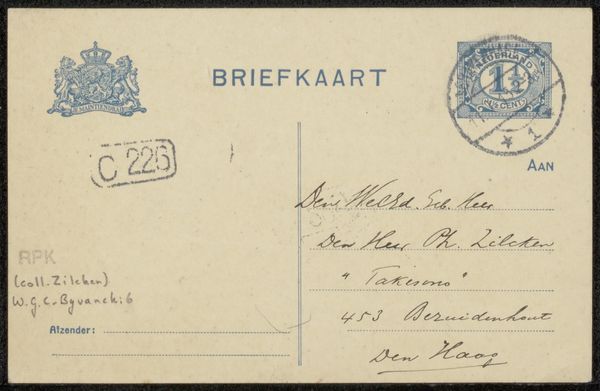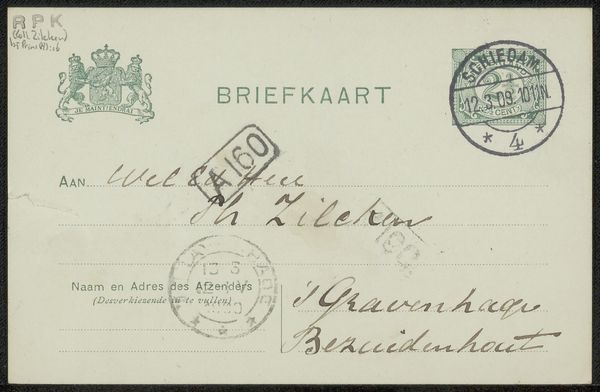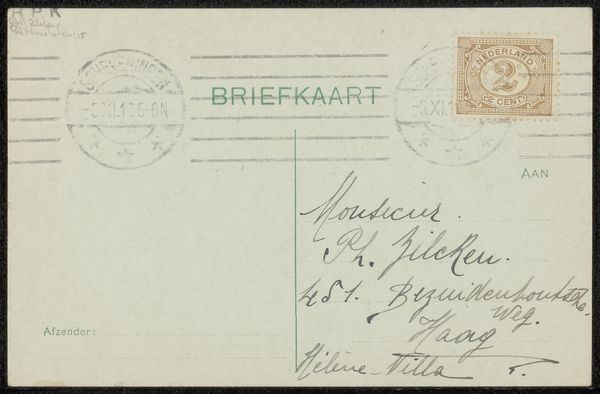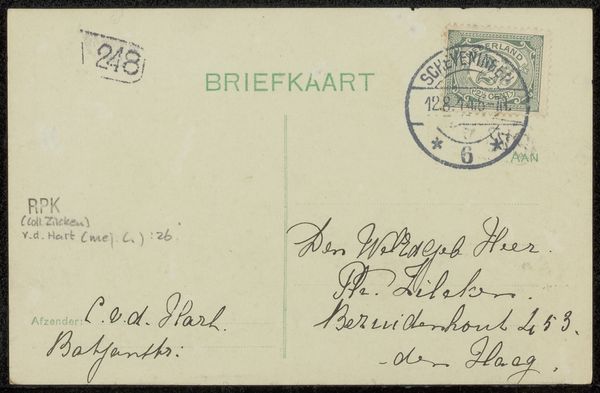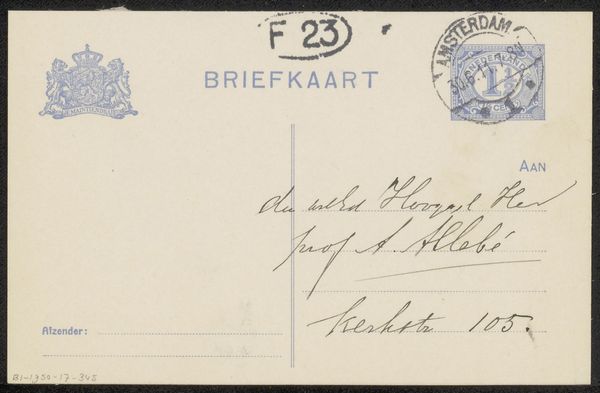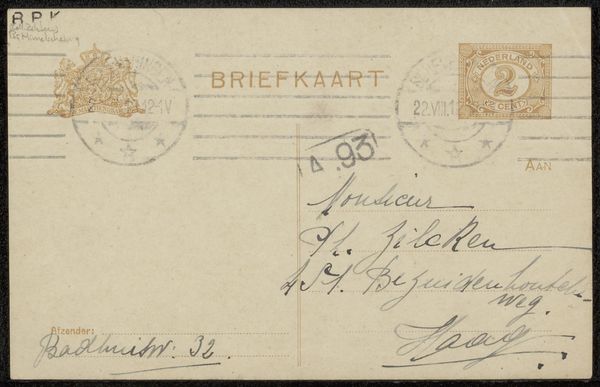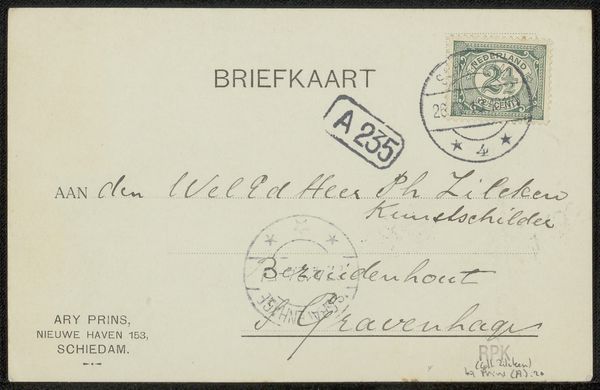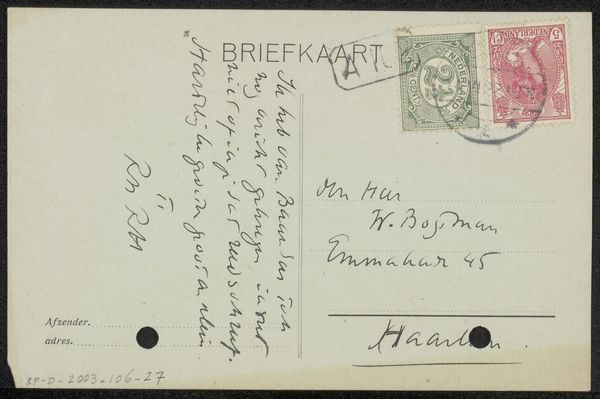
drawing, paper, ink
#
drawing
#
hand-lettering
#
dutch-golden-age
#
hand drawn type
#
hand lettering
#
paper
#
personal sketchbook
#
ink
#
hand-drawn typeface
#
fading type
#
pen work
#
sketchbook drawing
#
storyboard and sketchbook work
#
sketchbook art
#
calligraphy
Copyright: Rijks Museum: Open Domain
Editor: So, here we have a postcard – "Briefkaart aan Pieter Haverkorn van Rijsewijk," created before 1912 by Theo Colenbrander. It’s ink on paper and seeing all this old handwriting gives it such an intimate feel. What stands out to you? Curator: This postcard provides a fascinating glimpse into the socio-political landscape of the early 20th century, especially considering the rise of nationalism and shifting power dynamics within Europe at the time. Note the deliberate calligraphic style; how might it reflect ideas of nationhood and cultural identity? Editor: Well, calligraphy was a valued skill, and maybe using it on a postcard elevated the everyday? Curator: Exactly. Now, consider to whom this card was sent. What status and privilege did the receiver hold in society, evidenced by the honorific "Weledel geboren"? Further, let's look at the postmarks, a clear signifier of location and time. What might the origin and destination of this brief communication reveal about networks of power and influence in the Netherlands at the turn of the century? Editor: That’s a good point. It personalizes the concept. This small piece connects directly to broader systems and hierarchies. Curator: Indeed. We can view everyday correspondence like this as a form of social cartography, revealing who communicated with whom, from where, and potentially why. We see the seeds of modern discourse already being cultivated, though in very different forms. Editor: This is great. It's way more than just a piece of mail; it’s a connection to a specific moment and culture. Curator: Precisely. Analyzing its form and function gives a much richer and intersectional narrative of its context.
Comments
No comments
Be the first to comment and join the conversation on the ultimate creative platform.
